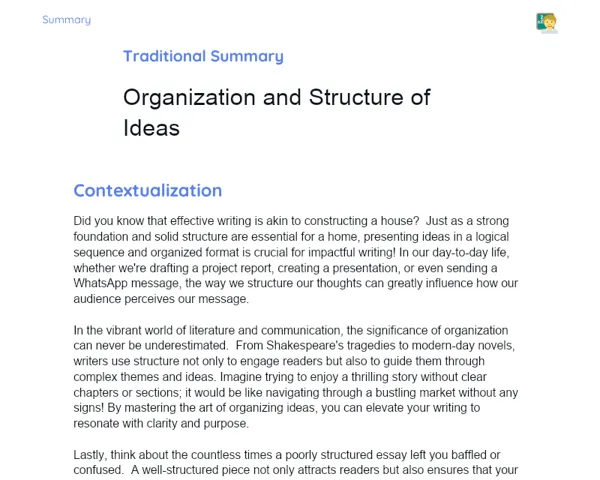Objectives
1. 🎯 Recognize Negative Sentences: By the end of this lesson, you'll be able to spot and understand the use of negative sentences in English, which are crucial for expressing disagreement, doubt, or negation in conversations.
2. 🎯 Transform Affirmative Sentences into Negative: Learn how to apply negation operators effectively in English to alter the meaning of affirmative sentences, enhancing your communication finesse.
Contextualization
Did you know that negative sentences in English can significantly broaden your ability to express ideas more richly and complexly? Mastering negation isn't just about following grammar rules; it is essential for effective conversations or writing. For instance, saying 'I don't like cats' not only communicates a preference but also implies a negative sentiment about cats. This illustrates how small grammatical tweaks can greatly enhance how we convey our thoughts and feelings.
Important Topics
Negation Operators
Negation operators are words or phrases that change affirmative sentences into negative ones. Common operators include 'not', 'no', 'never', along with their contractions. These are necessary for expressing negation clearly and are fundamental for achieving fluency in English.
-
'Not' is the most widely used negation operator and generally follows the main verb in most sentences to deny the action. For example, 'She does not like coffee' or 'She doesn't like coffee.'
-
'No' tends to be used in shorter responses or to deny the existence of something, as in 'No, I do not have a cat.'
-
'Never' helps to emphasize that something hasn't happened or doesn’t occur regularly; for instance, 'I never eat fast food.'
Transforming Sentences
Being able to change affirmative sentences into negatives is key for communicating effectively in English. This involves not just knowing the negation operators but also understanding their correct placement within sentences. This transformation is often used to convey disapproval, disagreement, or simply to highlight a negative fact.
-
To turn an affirmative sentence into a negative, just add the suitable negation operator. For example, 'He is happy' can be changed to 'He is not happy.'
-
The placement of the negation operator may vary depending on sentence structure. In simple past sentences, 'not' typically follows the auxiliary verb, like in 'She did not come.'
-
Grasping and applying sentence transformation correctly is crucial to avoid misunderstandings and articulate subtle differences in meaning.
Importance of Negative Sentences
Negative sentences are incredibly important for expressing a range of emotions, opinions, and facts. They allow you to communicate disagreement or negation and are essential for providing constructive feedback, articulating a lack of ability, and declining or limiting permissions.
-
In both formal and informal contexts, correct usage of negative sentences can reflect respect, politeness, and a higher level of language competency.
-
Knowing when and how to use negative sentences effectively can be especially crucial in professional, academic, or social settings, where clear communication is vital.
-
Mastering negative sentences will significantly enhance your communication skills in English, allowing for more precise and nuanced expression.
Key Terms
-
Negation Operators: Words like 'not', 'no', and 'never' that serve to convert affirmative sentences into negative ones.
-
Sentence Transformation: The method of changing the meaning of a sentence from affirmative to negative, or vice versa, utilizing negation operators.
-
Effective Communication: The skill to articulate your ideas clearly and succinctly, leveraging the nuances of language to convey specific meanings.
For Reflection
-
How can using negative sentences alter the meaning of a statement, and why is this significant in communication?
-
Think of daily scenarios where negative sentences are essential for expressing your opinions or disagreements. How can you apply this in your studies or workplace?
-
What effects differ between using 'not', 'no', and 'never' in a negative sentence? How might your choice influence how the listener interprets your message?
Important Conclusions
-
In this lesson, we delved into the significance of negative sentences in English, learning how to transform affirmative sentences into negatives and vice versa.
-
We discussed the importance of negation operators like 'not', 'no', and 'never', and how their correct application can significantly alter the meaning of a sentence.
-
We learned that the ability to use negative sentences is essential for clear and effective communication, thus allowing for more precise expression of doubts, disagreements, or negations.
To Exercise Knowledge
- Create an expression journal: For a week, jot down negative sentences you hear in movies, songs, or casual chats. Try incorporating these sentences into various contexts to practice your fluency. 2. Family Debate: Select a thought-provoking topic and organize a debate with family or friends, utilizing negative sentences to voice disagreement or critique. 3. Write a mini-essay: Choose a theme and craft a brief essay containing at least five negative sentences, showcasing different contexts of use.
Challenge
Create a 1-minute video: Share your views on a topic of your choice while using only negative sentences. Attempt to mix in varied negation operators to illustrate different levels of disagreement or negation.
Study Tips
-
Watch English movies or TV shows and pay close attention to negative sentences. Try to repeat them and grasp the contexts in which they occur.
-
Practice with friends or classmates. Organize engaging debates or sentence transformation games to work on negative sentences in a fun and interactive manner.
-
Utilize online resources like language apps or grammar exercise websites that offer specific drills focused on negative sentences and negation operators.


